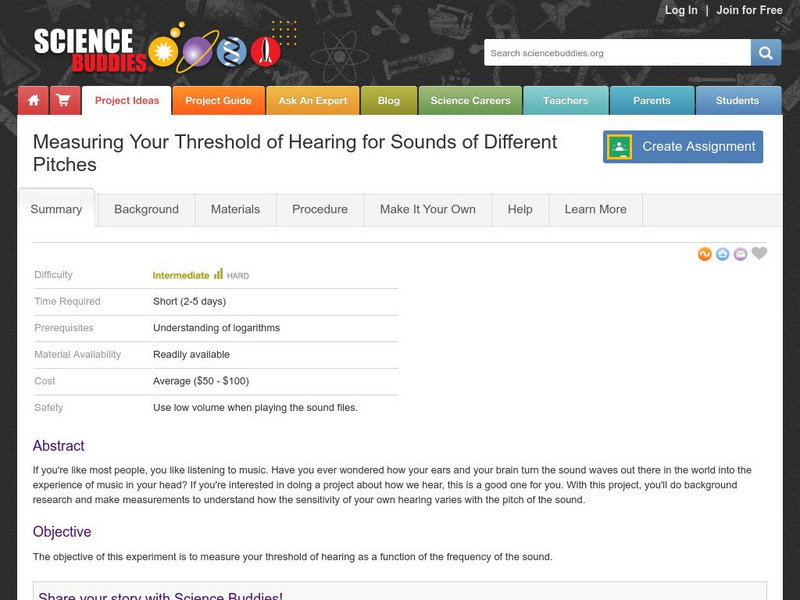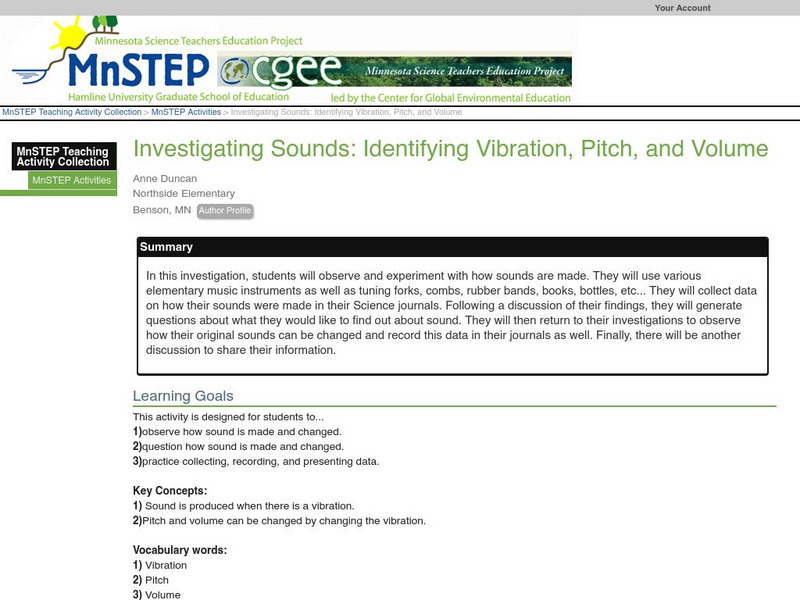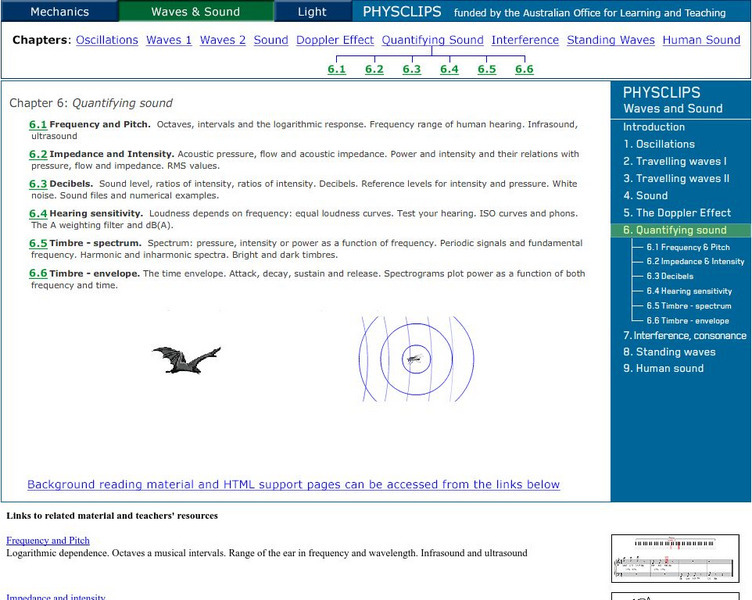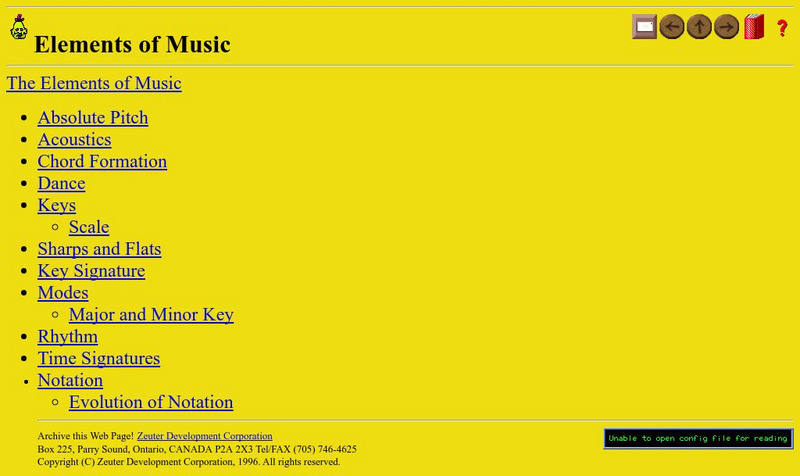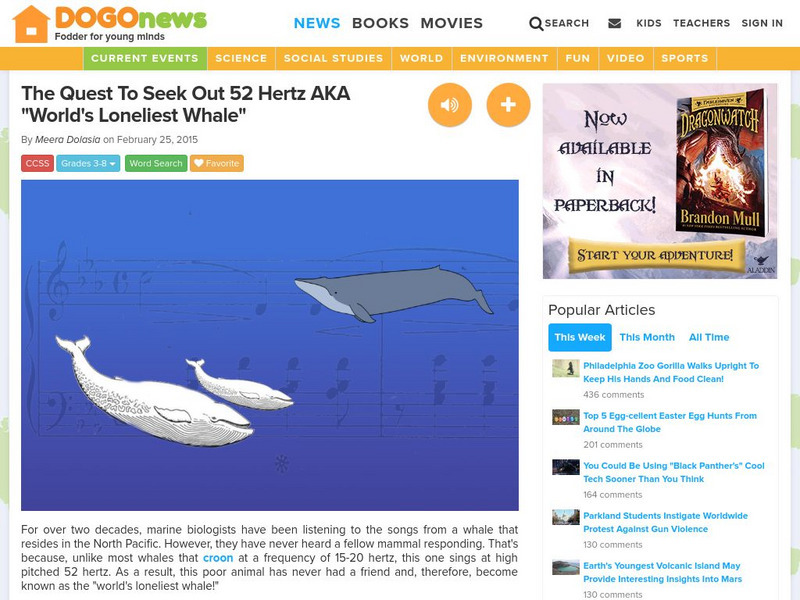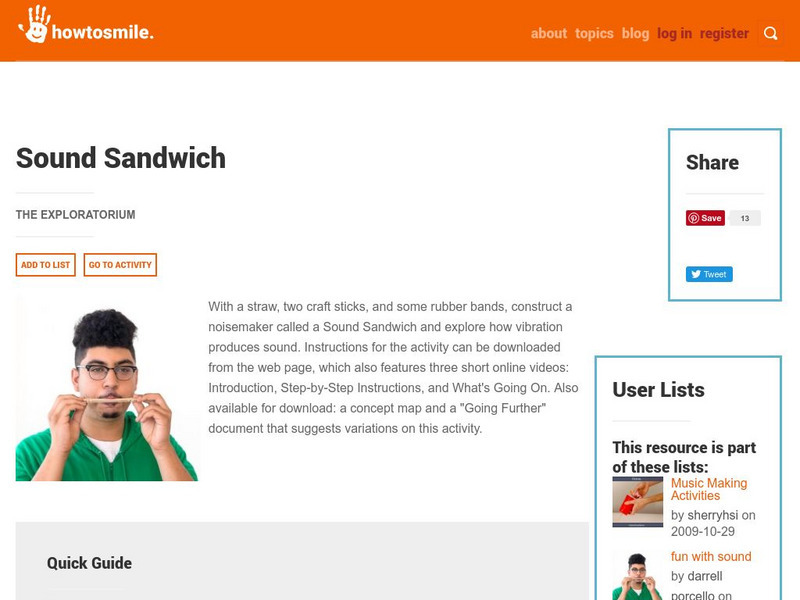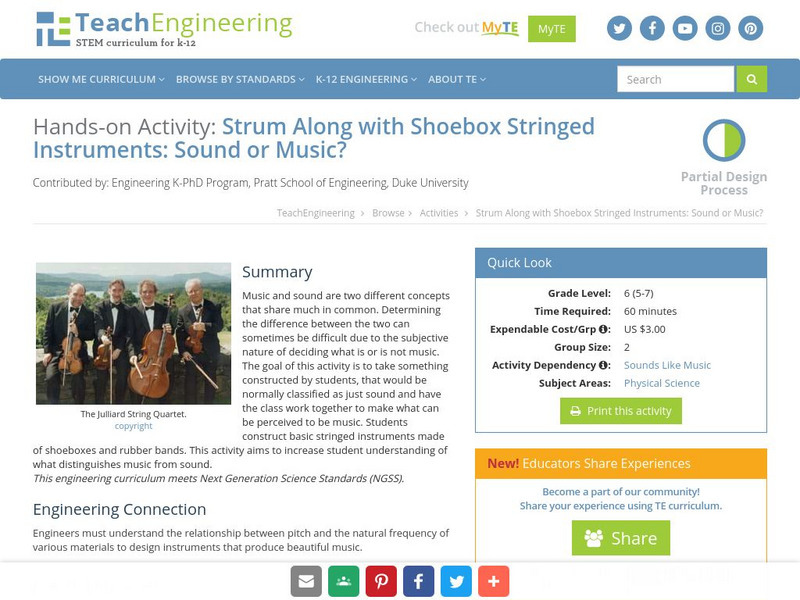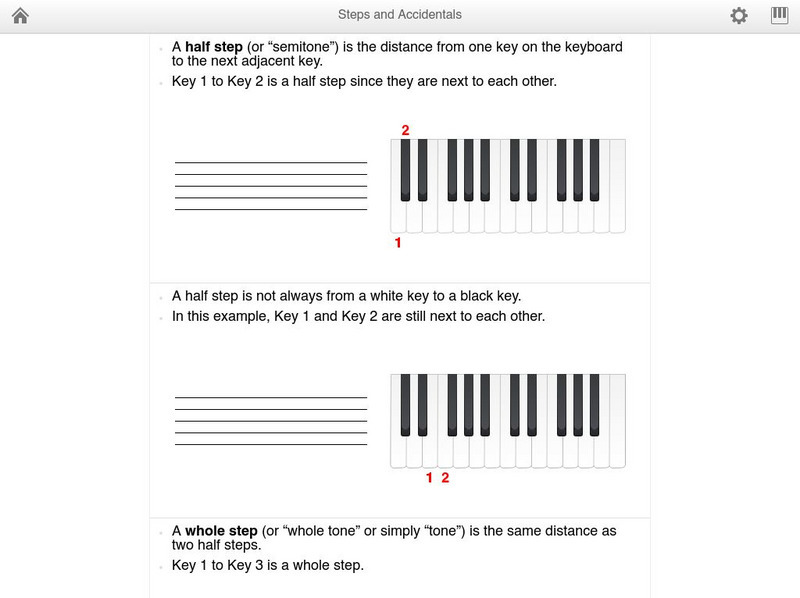Curated OER
Tune Up Your Ears!
Learners discuss meaning of pitch, listen for different sounds in classroom, hallway, and outdoors, and listen to sounds played on piano and on computer to determine high or low pitch.
Curated OER
Recognizing High and Low Pitch
Students distinguish a high pitch from a low pitch, and demonstrate high/low pitch recognition by creating contrasting movements to high and low music, and use instruments to represent the characters in The Three Little Pigs.
Georgia State University
Georgia State University: Hyper Physics: Pitch = Frequency of Sound
Pitch is the ear's response to frequency, and here you can get a better understanding of pitch, its measurement and the perception of pitch.
Science Buddies
Science Buddies: Efficient Propeller Design
There's a lot to understand about the simple propeller to see how it affects lift and thrust in an airplane or helicopter. This Science Buddies project gives you lots of ideas on how to change the design of the propeller to achieve...
Science Buddies
Science Buddies: Measuring Your Threshold of Hearing
How your ears and your brain turn the sound waves out there in the world into the experience of music in your head, remains a mystery to many, but yet we all experience and even enjoy sounds and music. If you're interested in doing a...
Science Buddies
Science Buddies: Correlation Between Pitch & Age, Gender, Musical Background
Music can be a great way to learn more about science. This project uses music to examine whether there is a correlation between age, gender, or musical background and being able to sing with perfect pitch.
Science Education Resource Center at Carleton College
Serc: Investigating Sound: A Lesson in Length and Pitch
In this classroom guided inquiry instructional activity, students will rotate through five stations of various sound instruments to look at how length affects pitch. The five sound stations include: straw flutes, xylophone, water phone,...
Science Education Resource Center at Carleton College
Serc: Physics of Sound: How Does Length Affect Pitch?
Students investigate how pitch varies with the length of instrument in this activity. Activity includes procedure and background information.
Science Education Resource Center at Carleton College
Serc: Investigating Sounds: Identifying Vibration, Pitch, and Volume
In this investigation, students will observe and experiment with how sounds are made. They will use various elementary music instruments as well as tuning forks, combs, rubber bands, books, bottles, etc. They will collect data on how...
Science Education Resource Center at Carleton College
Serc: Investigation of Pitch and Rate of Vibration
An inquiry lesson where students explore pitch and the rate of vibration. Students will look at how the rate of vibration which creates pitch is affected by the size of the object studied.
PBS
Pbs Teachers: Bottle Hit and Blow Experiment
Explore the properties of glass and plastic bottles by observing sounds made when they are struck on the side or when you blow across the opening.
University of New South Wales (Australia)
University of New South Wales: School of Physics: Physclips: Quantifying Sound
Learn about terms to quantify sound like pitch, frequency, decibels, and much more in this learning module. Learning module includes animations and videos.
Museum of Science
Museum of Science and Industry: Online Science: Straw Pipe
Instructions to create a pan pipe made from straws. Also included is music to play songs using the pan pipe and a brief background about sound vibrations.
Other
Alien Travel Guide: Elements of Music the Basics
Fine site created for Canadian schools devoted to basic elements of music, including pitch, acoustics, time signatures, keys, and rhythm.
Other
Functional Ear Trainer
This is a freeware software product that can help you develop your ear training. There is a basic and an advanced version of the program.
Other
Music Fundamentals
This is like a music theory textbook online. It includes great explanations and assignments, although there is not a way to check your completed assignments. It begins with the basics and goes through triads. Midi files are included.
DOGO Media
Dogo News: Quest to Seek Out "World's Loneliest Whale"
Read how scientists are working to track a whale who sings at a pitch too high to be heard by other whales, which has resulted in it being named the "World's Loneliest Whale." Includes video.
Other
How to smile.org: Sound Sandwich
Students discover how vibrations produce sound by making this sound sandwich out of everyday materials. Lesson plans include three videos that give an introduction, step-by-step demonstration, and an explanation of the science behind the...
TeachEngineering
Teach Engineering: Strum Along
Music and sound are two different concepts that share much in common. Determining the difference between the two can sometimes be difficult due to the subjective nature of deciding what is or is not music. The goal of this activity is to...
TeachEngineering
Teach Engineering: What's a Wavelength?
Students measure the wavelength of sounds and learn basic vocabulary associated with waves. As a class, they brainstorm the difference between two tuning forks and the sounds they produce. Then they come up with a way to measure that...
TeachEngineering
Teach Engineering: Making Music
In this instructional activity, learners learn about sound. Girls and boys are introduced to the concept of frequency and how it applies to musical sounds.
TeachEngineering
Teach Engineering: Sounds Like Music
Music can loosely be defined as organized sound. The instructional activity objectives, understanding sound is a form of energy, understanding pitch, understanding sound traveling through a medium, and being able to separate music from...
OpenStax
Open Stax: Catherine Schmidt Jones: Harmonic Series
Dealing with the harmonic series, this website goes into come detail concerning pitch, frequency and color. Test your knowledge with several self checking problems.
Music Theory
Music theory.net: Steps and Accidentals
Provides an explanation of half steps, whole steps, flats, and sharps. Illustrated examples accompany these definitions.






